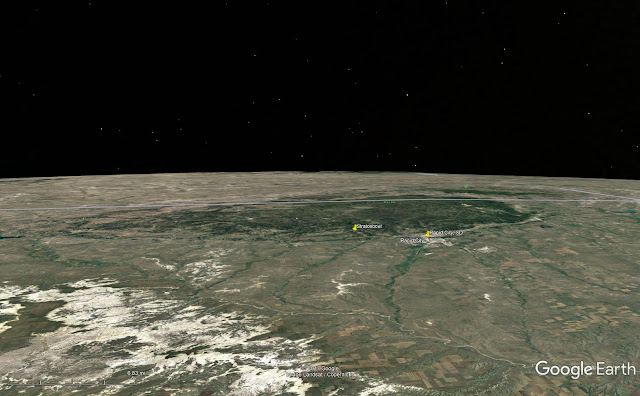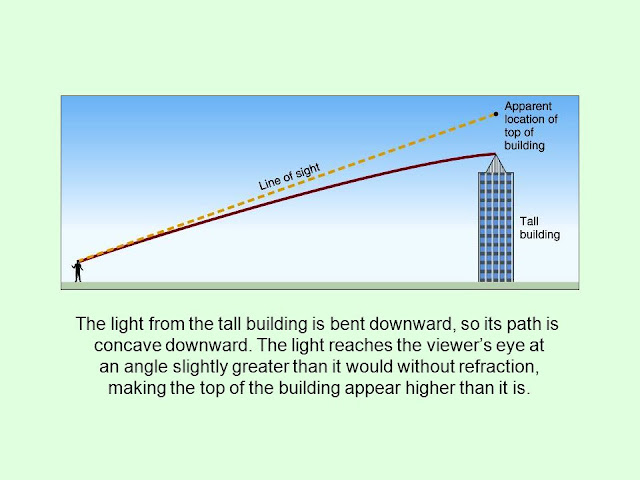As a Flat Earther, would finding out the International Space Station is actually a couple of hundred miles up change your mind? If you would consider such evidence, then here is the method.
You need to get two people together and go out and measure it multiple times -- estimate your margin of error (can you even measure to within 1°)? Think about how you can make your angular measurements more accurate. Maybe get a surveyor friend with a Theodolite to take more accurate measurements of the angles if you can.
I also posted a shortcut method at the bottom if this is all too much for you.
Practice with airplanes, with some care you can find the exact flight on FlightAware and find out the actual altitude.
Once ready, you can find when the ISS will be over your location using this Tracker:
ISS (ZARYA) - Tracker
You can use this to plan your observation locations and time and it will also tell you exactly where the ISS is overhead so you can compare that to your observational data and check how accurate your measurements were.
Here is a School Worksheet that explains how, but as this is slightly complex let's walk through an example (note this is a simulated observation, I had planned to observe one leg but it was cloudy):
Once ready, you can find when the ISS will be over your location using this Tracker:
ISS (ZARYA) - Tracker
You can use this to plan your observation locations and time and it will also tell you exactly where the ISS is overhead so you can compare that to your observational data and check how accurate your measurements were.
You need to record the exact date and time (to the second) that you make the observations from two locations (around 10-20 miles apart), ideally take an image using a theodolite application but you'll need a separate record of the azimuth as phones are notoriously poor at finding the heading. If you capture some distinctive feature on the ground and line it up in Google Earth you can find the heading much more accurately.
Remember, you need both Azimuth and Altitude from both locations, at the SAME time. This exercise is not very forgiving. Azimuth is the compass heading, Altitude is the tilt up.
Remember, you need both Azimuth and Altitude from both locations, at the SAME time. This exercise is not very forgiving. Azimuth is the compass heading, Altitude is the tilt up.
Here is a School Worksheet that explains how, but as this is slightly complex let's walk through an example (note this is a simulated observation, I had planned to observe one leg but it was cloudy):
Observation Time: 2017-10-19 15:49.09Z, locations 14,011 meters apart (~8.71 miles)
Location A: 30° 23' 2.40"N, 97° 42' 26.27"W
ISS Az 320° 16' 20.4", Alt 65° 26' 12.6" [320.27233°, 65.43683°]
Location B: 30° 26' 4.70"N, 97° 50' 27.20"W [30.434637°, -97.840887°]
ISS Az 322° 27' 18.0", Alt 67° 2' 1.3" [322.455°, δ=67.03369°]
Below is the geometry from the worksheet, keep in mind this is in 3 dimensions with G being elevated directly over C.
To orient ourselves. North (0°) is straight up. Our two locations are points A and B, we know from Google Earth the distance between them (c) is 14,011 meters and the heading from A to B is 293.76°. C is the point on the ground directly under the ISS (which is at point G, directly over point C). From (a) and δ (ISS Altitude at B) we can find our final height, f=a·tan(δ) or f=b·tan(ε)
From this, I know that (a) is about 107 miles just from measuring on Google Earth, which makes 107*tan(67.03369°) which puts the ISS around 252 miles high. So we're on the right track. But let's do the math also. Before we panic over the math, remember that the tangent of an angle gives us the SLOPE of the line. SLOPE is RISE/RUN so if we multiply by RUN we're left with just RISE. That's all this is doing.
Compare the location of ISS on the satflare map with the angular estimate from the Google Map. They are a good match so we know we have pretty good Alt/Az data for our two locations.
Compare the location of ISS on the satflare map with the angular estimate from the Google Map. They are a good match so we know we have pretty good Alt/Az data for our two locations.
So now we just need to connect the dots. We can solve any triangle if we have 3 of the six elements (length of sides and angles). We have (c), and we can find β and γ from the azimuth angles.
From basic triangulation we can then use the law of sines to compute the remaining sides of a triangle when two angles and a side are known. In the workbook they use π (pi) for the angle at C, but I'm going to use θ (theta) as using π (pi) is confusing since it has another mathematical meaning.
Location A:
Our bearing from A to B is 293.76° and the ISS Azimuth is 320.27233° which makes our angle at A of 26.51233° = β+ɑ
Location B:
The ISS Azimuth here is 322.455° and our reverse bearing is 113.76° gives us an inside angle of (360-322.455) + 113.76 = 151.305° = γ-ɑ
That gives us two angles and a side so we can now solve for side (a) using the Law of Sines.
c/sin(θ) = a/sin(β+ɑ) = b/sin(γ-ɑ)
I let the linked calculator do the work but you can see we get 176637.5m for (a):
176637.5 meters * tan(65.43683°) ~ 395.2 km (246 miles)
And going the other way, from A we get 164219m for (b):
164219 meters * tan(67.03369°) ~ 386.5 km (240 miles)
Somewhere in that range. The current balloon record is 53km - but that was a total weight of under 40 kg and at 100 km the speed required to maintain flight is greater than the orbital speed (known as the Kármán line).
If you need to estimate the bearing using the latitude and longitude points, where φ₁,λ₁ is the start point, φ₂,λ₂ is the end point you can use: atan2(sin Δλ ⋅ cos φ₂, cos φ₁ ⋅ sin φ₂ − sin φ₁ ⋅ cos φ₂ ⋅ cos Δλ)
But what is our margin of error here?
Our Azimuth angles are less than 2.2° apart so we clearly have to be fairly accurate.
Let's reduce both our inside angles by 2° which will bring in the sub-ISS point closer and give us an underestimate of the height. That puts (a) at just 66,409 meters and puts the ISS at 97.3 miles. If we underestimate the ISS altitude angle by another 2° that leaves us at 88.6 miles. Still WELL above any balloon nonsense but we get an idea of how much even a small error will affect the final results.
You can get further apart but if you get too far then Earth's curvature starts to mess with your angles.
Shortcut
Also note that while you can't use tan() function for 90° angles, if the ISS is directly overhead one location, you can just use the Altitude angle from the other location and multiply that by the distance between and avoid all the other angle calculations because (a) would equal (c).
If you build up trust in the ISS tracker application you could use this method to make a single observation of the Altitude angle and estimate the height using the calculated distance.
I attempted such a measurement the other day but I missed it!
Now, because I didn't get my crosshairs on the ISS I don't have an angle measurement so I'll keep trying (and I think I need something more accurate than a phone). But the point isn't for ME to prove to myself the ISS is about 250 miles up but for YOU to do the work yourself.
I'll continue to add future observations.
But also think about this. How is the ISS pretty much where satflare predicted for me and also accurate for all other observers if it isn't going 17,000 mph? You could fake it for a short distance but then you would soon get WAY off.
Given that it orbits every 90 minutes and it's about 24,900 miles that is AT LEAST 16,000 miles per hour if it was buzzing right over our heads. That's a mighty fast airplane, much less a balloon. Do you have any idea how much heat an airplane that fast would generate at MACH 20.8 and how much FUEL that would that? The Concorde burned 4,800 gallons per hour (22,000 l/h) at cruising speed of Mach 2.04.
And this thing is about a football field in size (356 feet (109 meters) by 240 feet (73 meters)), while the Concorde was just 202 feet long (and you can verify these dimensions once you confirm the distance to the ISS using the methods described herein, because angular size is just 2*atan(size/2/distance). So if you know the distance and angular size (from a high resolution image) then you can estimate the size.
=============
I got a little bit better observation of the angle here (satflare observation link):
 |
| ISS observation 2017-10-29 - See YouTube Video |
I don't know how much horizon angle throws off the elevation angle but the expected angle is 58.3 - 58.8° (this is how much the elevation angles changes in ONE second at this time) and we're marking out 58.3° with the ISS just above the center line.





































